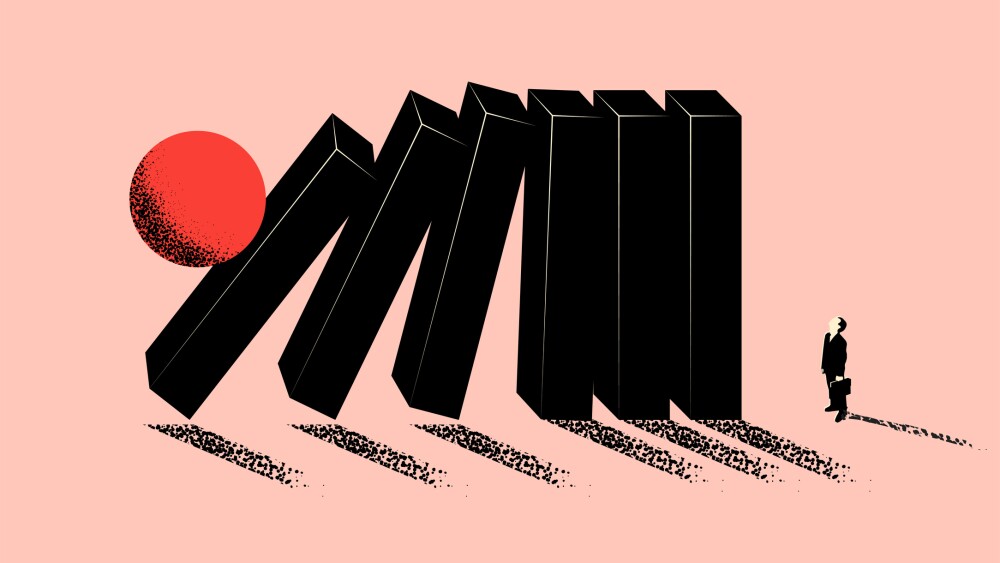Psychedelic and psychedelic-assisted therapies in the neuropsychiatric space have stalled for decades.
Courtesy of Getty Images
Psychedelic and psychedelic-assisted therapies have stalled for decades, likely because they’re nearly all Schedule I on the Controlled Substances Act.
Substances with this designation have no known medical uses and are considered to be highly addictive. Though, some Schedule I substances, like marijuana (which is legal in some states), have run into a significant debate over what constitutes an addictive substance.
But in the past year, medical and financial advances in the arena have made more appearances in research. That these methods are being trialed makes for big news in a space that has many skeptics.
The Fall and Rise of Psychedelic-Based Therapies
Psychedelics have been used for religious and healing purposes by indigenous peoples in the U.S. for centuries, but they didn’t make their official entrance into the world of research until 1950. According to a 2017 article published by the NIH, this is when the first official report on LSD was published in English.
For the next decade, researchers studied psychedelics to improve mental health, primarily in patients suffering from alcohol dependence and mood disorders.
This research halted in 1971 when Pres. Richard Nixon passed legislation against the use of psychedelics and began what is commonly known as “the war on drugs.”
Jerry Rosenbaum, a professor of psychiatry at Harvard Medical School and scientific co-founder of Sensorium Therapeutics, explained the setback this caused in research for psychedelic-based therapies.
“We lost about 50 or more years of opportunity to understand the potential of these drugs,” Rosenbaum told BioSpace. “That made it extremely difficult, if not impossible, for the drugs to be studied.”
As these drugs fell out of popularity in research, they became more and more popular for recreational use, further cementing the reigning societal idea that they have no place in modern medicine.
Investors Cash In
Since the 1990s and early 2000s, researchers have made meaningful, albeit slow, advances in the space.
Rosenbaum said that as efforts have increased in the last decade to legalize cannabis for medicinal and recreational use, the stigma against recreational drugs has also begun to subside, and many biopharma companies have joined the race to take their therapies to the FDA.
According to reporting by the Wall Street Journal, investors see money-making potential in psychedelic medicines, even though they have yet to be approved by the FDA.
In fact, data compiled by Psychedelic Invest show companies researching these therapies received a total of $730 million in 2021, up from $42 million the year before and Fortune predicts the market will reach $10.75 billion by 2027.
Along with LSD and psilocybin, these investments include research into MDMA, ketamine and DMT as treatments for myriad neuropsychiatric conditions, from anxiety and depression to eating disorders and autism spectrum disorder.
In addition to a reduction in stigma and legal barriers, Rosenbaum said this rise in popularity may also drive by an increase in mental illness as a whole, citing the pandemic, inflation and climate change as potential stressors, making people more vulnerable to psychiatric disorders.
“There’s an increase in not only in the amount of distress in the world, but the number of people who meet the criteria for a treatable psychiatric condition,” he said. “And we know that the treatments we have available now really only help us a certain percentage.”
The pitfalls of selective serotonin reuptake inhibitors (SSRIs), habit-forming benzodiazepines–like side effects and low success rates–are challenges that many believe psychedelic-based treatments can overcome.
This belief is not without cause, as many studies conducted in 2022 alone have shown these therapies may completely change the future of mental health treatment.
Data from the Multidisciplinary Association for Psychedelic Studies’ Phase III trial studying its MDMA-based therapeutic in patients with PTSD showed 67% of patients treated no longer met the diagnostic criteria for PTSD.
On Dec. 8, Compass Pathways’ COMP360 produced an 86% remission rate in patients with type II bipolar disorder.
MindMed’s Phase II trial studying LSD in Generalized Anxiety Disorder and Small Pharma’s Phase II trial studying DMT in Major Depressive Disorder have produced similarly positive results.
Proceed with Caution
Rosenbaum’s own company, Sensorim Therapeutics, also recently launched with $30 million to advance nature-inspired psychoactive medicines for mental health.
Even so, he cautioned against jumping on the “hype train” for these therapeutics, referencing a JAMA Psychiatry article published in August titled, “Preparing for the Bursting of the Psychedelic Hype Bubble.”
The article’s authors said that a “disturbingly large number of articles have touted psychedelics as a cure or miracle drug. These extreme shifts in perception can create impediments to rigorous science and reasonable clinical applications.”
They went on to write that they believe it would be beneficial to the field if this bubble was “deflated.”
Rosenbaum expanded on this, saying: “These drugs definitely work, and they work better than standard antidepressants. But they don’t work for everybody. And we don’t know how durable those effects are, or once you get better, how long the effects will last.”
atai Life Sciences is one of the leaders in the psychedelic-based therapeutic space. It is also one of the best examples of the successes and challenges many of these therapies have seen.
In June, atai announced it had dropped three of its psychedelic-based candidates to refocus its priorities. Though this is often a sign of a company struggling to stay afloat, atai reported $312 million in financing at the time and all eight of the compounds left in its pipeline have now entered the clinic.
Srinivas Rao, co-founder and CSO of atai, told BioSpace that its formulation of R-ketamine, PCN-101, has the potential to be an at-home treatment for patients with treatment-resistant depression.
R-Ketamine is intended to be used as an alternative to Spravato (S-ketamine) that is currently on the market. One of the biggest drawbacks to Spravato is that because it can cause both dissociation and significant sedation in many patients, it can only be administered in a clinic, where they can be constantly monitored. This, Rao said, creates a barrier to access for many.
“In atai’s Phase I clinical trial of PCN-101, we saw little-to-no dissociation at the 30 and 60mg doses that were advanced into the Phase IIa trial,” Rao said. “This could be significant for patients, physicians and payers.”
Rao said developing these types of therapies comes with unique challenges, many of which stem from legal barriers.
As of this writing, certain psychedelic substances are only legal for therapeutic use in Oregon and Colorado. However, these substances have been decriminalized in several other states.
Overall, as companies like atai inch closer to FDA approval, an increase in interest and popularity of psychedelic-based therapies will likely continue its upward trend.
And the further these studies progress, the more researchers will learn about the efficacy and safety of each psychedelic substance–both positive and negative.
Rosenbaum said: “Skepticism is good, but opposition to research is bad. There’s still a lot to learn.”





